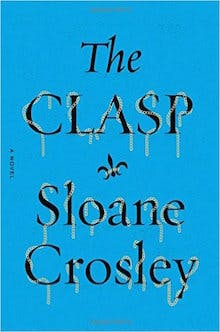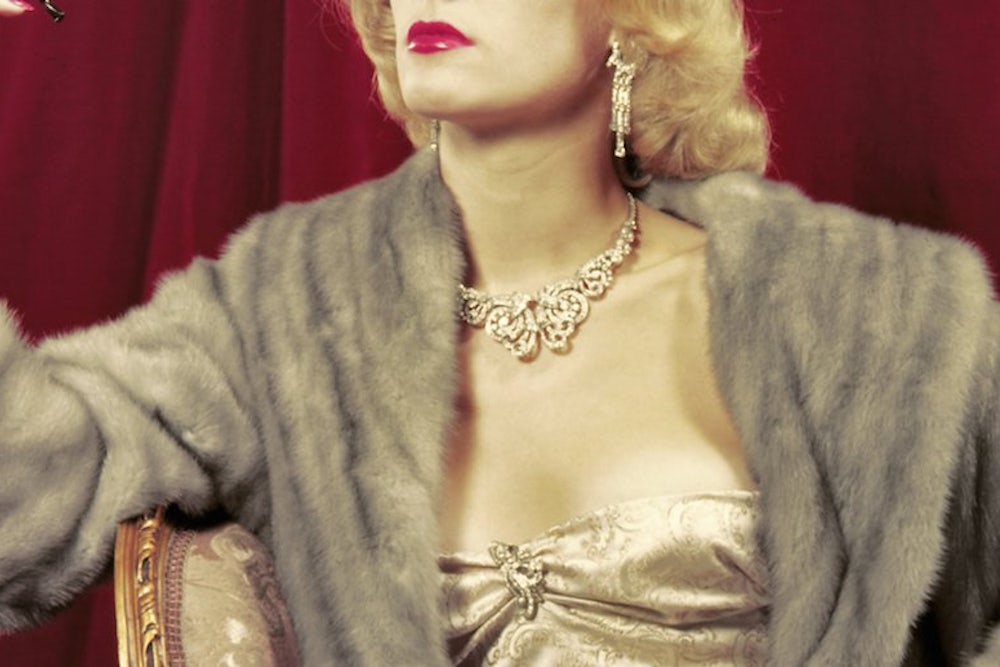When Guy de Maupassant’s “The Necklace” first appeared in the pages of Le Gaulois, in 1884, it was all anybody could talk about: The instructive, seductive short story—about a socially ambitious young woman’s foolish lie and its awful consequences—obsessed French society and alarmed critics, some of whom worried that it was simply too sad a tale. In it, “pretty and charming” Mathilde Loisel borrows a diamond necklace from a wealthy friend and promptly loses it; to save face, she and her husband quietly replace it, but the cost of the new necklace sends them deep into debt and a life of grueling labor. A decade later, Mathilde runs into her wealthy friend and finally confesses, only to learn that the necklace she lost was a cheap imitation, worth almost nothing. She’s wasted her youthful promise in trying, pointlessly, to make the fake into something real.

In a bit of “harmless sport,” Henry James adapted the plot for his short story “Paste” in 1891, twisting Maupassant’s tragedy into a comedy of manners in which a fake necklace turns out to be real, and there have been plenty of adaptations since. The newest—and arguably the funniest—is Sloane Crosley’s The Clasp, a light-hearted but sincere novel about three college friends who reunite a decade after graduation and end up in a kind of soul-searching caper that takes them through New York, Los Angeles, Florida, and France. As they try to sort out their lives, they’re also hunting down the very necklace that they believe may have inspired Maupassant’s short story.
Necklaces—both priceless and fake—abound in The Clasp (it’s one of the great, subtle jokes that run through the book), but the deepest joke—and perhaps the only successfully dark one—is how neatly an Old World tragedy about the delusions of class can be flipped into a romp about the cult of “self-actualization” in modern-day America. What do bourgeois social climbers in 19th-century Paris have to do with American millennials? They share the languor and the fear that characterize an abundance of choice. The stressful illusion that all is potentially within reach—both the finest destinies and their cheapest imitations. One wrong move, and we might easily waste our lives in pursuit of inauthentic things: the wrong partners, the wrong careers, the wrong goals.
If Maupassant’s plot hinges, in part, on scarcity and how it empowers the elite, Crosley’s hinges, in part, on mass production and the American love of imitation—except when it comes to the specialness of our individual lives. We’re brought up to spend our twenties anxiously awaiting the arrival of those glamorous strangers, our true selves. Crosley’s comedy is nearly always upbeat, almost stubbornly so, but it still manages to slyly investigate the downside of “personal authenticity,” that weird American obsession that distorts everything from our shopping habits to our national politics. In The Clasp, characters struggle on the brink of 30 to transform the fake—meaning the privately miserable and “successful” lives they’ve been pretending to lead—into something real.
There are three protagonists in The Clasp, and each of them embodies some of the essential DNA of Maupassant’s Mathilde. There’s Victor, a depressive Adrian Brody lookalike who designs search-engine algorithms; Nathan, a handsome, womanizing TV writer living/hiding out in Hollywood; and Kezia, who resembles Crosley and works for a tyrannical jewelry designer. Kezia is tasked with overseeing the production of the Starlight Express, a limited-edition faux pearl and sapphire necklace with a fatal design flaw: The cloisonné clasp is malfunctioning.
The friends are also lingering in an old love triangle: Victor loves Kezia who loves Nathan who most loves himself. At the beginning of the book, they meet up at a wealthy friend’s wedding in Florida, where a hungover Victor stumbles into a conversation with the groom’s mother and ends up entrusted with a sketch of her ancestor’s diamond necklace, lost during the Nazi occupation of Normandy. Perhaps sensing that he’s a young man in desperate need of a quest, she asks him to track down the real thing. Victor becomes dutifully obsessed, and slowly but surely the story pulls Victor, Kezia, and Nathan toward the madcap—and sometimes moving—final scenes at Maupassant’s own estate in Normandy. In its funniest moments, The Clasp reads like best-friend detective fiction at a self-help conference in the French countryside: Scooby-Doo meets Nausea.
Crosley, who worked for a decade as a book publicist before quitting to write full-time, is already celebrated as an essayist—her collections I Was Told There Would Be Cake (2008) and How Did You Get This Number (2011) were both hugely popular and critically acclaimed. She’s that rare literary celebrity who shows up winningly—and fashionably—on late-night talk shows; she once played herself on Gossip Girl, a bizarro gig for which she shrewdly mocked herself in an essay for The Believer. Self-awareness—in her essays and in the management of her public image—is one of Crosley’s great strengths. She’s a master in the careful American art of undercutting the appearance of excessive good fortune with smart, self-effacing humor.
The Clasp is Crosley’s third book, but her first novel. Though it’s much more than a mere fictionalization of the established facts of her life, it does cover much of the same territory: bridesmaids, friendship, awkward reunions, Americans abroad, terrible jobs, late-twenties malaise, the consolations of art, crushes, cruel bosses, New York, careerism, fake and fine jewelry, the French. So why bother replacing the factual with the fictional? What does a novel make possible that a book of essays doesn’t?
What The Clasp does best through its characters—what perhaps Crosley’s almost maddeningly likable first-person essays can’t do—is raise the emotional, moral stakes around our youthful failures and fantasies. The least likable characters in the book are the ones who have what they want. It’s Kezia, Nathan, and Victor who are fatally dissatisfied and adrift. And they’re the only characters who, by the end, seem truly freed up to choose. They’ve learned to let go of wanting what they can’t afford to lose—a theme that’s been central to Crosley’s work since her earliest essays. Crosley’s honesty about maturing into our real appetites—which are sometimes for conventional and supposedly mediocre things—makes The Clasp instructive and seductive in its own right.
Maupassant lived recklessly, wrote feverishly, and gradually went insane from syphilis, which he’d contracted in his twenties. He died in an asylum in Paris at 43 after attempting suicide; he’d written his own epitaph: "I have coveted everything and taken pleasure in nothing." To research The Clasp, Crosley rented a room at his former estate in Normandy, where he set one of his last and darkest stories. A gentleman much like Maupassant succumbs to a kind of parasitic insanity that makes it increasingly difficult for him to distinguish the real from the hallucinatory. He comes to believe that an invisible intruder is living in his room and feeding off of his life as he sleeps: Who is this other self that forces him to think and want and do things he’d rather not? He takes a trip to Paris to lift his spirits, but ends up walking despondently through the city’s festive crowds: “The nation is a stupid herd, alternating between imbecile acceptance and savage rebellion. You say to it: ‘Enjoy Yourself.’ It enjoys itself.”
Crosley has achieved a rare feat: a complex and clever work of homage that deepens the original by connecting it to contemporary life. The Clasp is a gentle, astute, funny, smart, and very entertaining book. But is it sad enough? Not nearly.
